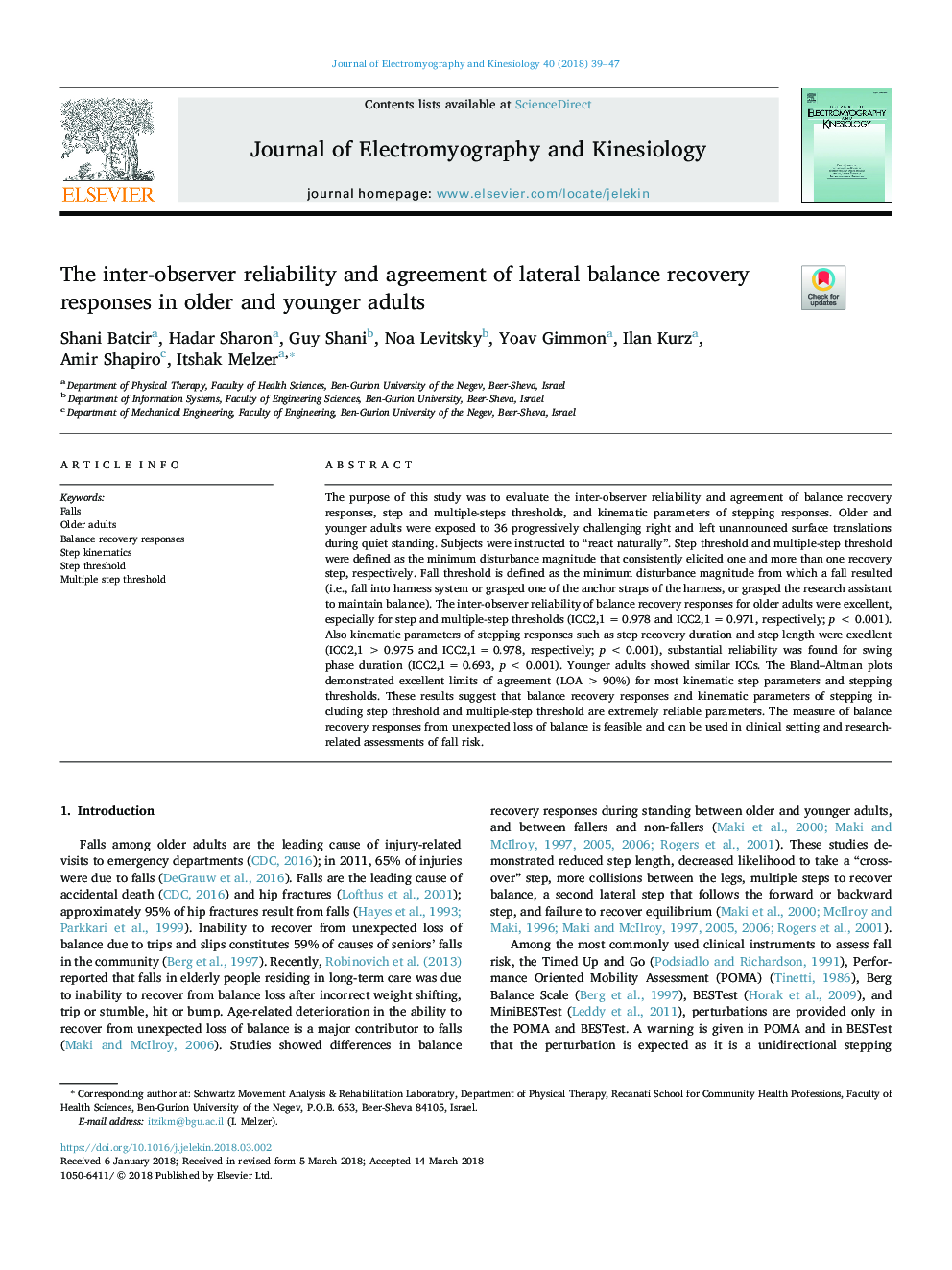| Article ID | Journal | Published Year | Pages | File Type |
|---|---|---|---|---|
| 8799763 | Journal of Electromyography and Kinesiology | 2018 | 9 Pages |
Abstract
The purpose of this study was to evaluate the inter-observer reliability and agreement of balance recovery responses, step and multiple-steps thresholds, and kinematic parameters of stepping responses. Older and younger adults were exposed to 36 progressively challenging right and left unannounced surface translations during quiet standing. Subjects were instructed to “react naturally”. Step threshold and multiple-step threshold were defined as the minimum disturbance magnitude that consistently elicited one and more than one recovery step, respectively. Fall threshold is defined as the minimum disturbance magnitude from which a fall resulted (i.e., fall into harness system or grasped one of the anchor straps of the harness, or grasped the research assistant to maintain balance). The inter-observer reliability of balance recovery responses for older adults were excellent, especially for step and multiple-step thresholds (ICC2,1â¯=â¯0.978 and ICC2,1â¯=â¯0.971, respectively; pâ¯<â¯0.001). Also kinematic parameters of stepping responses such as step recovery duration and step length were excellent (ICC2,1â¯>â¯0.975 and ICC2,1â¯=â¯0.978, respectively; pâ¯<â¯0.001), substantial reliability was found for swing phase duration (ICC2,1â¯=â¯0.693, pâ¯<â¯0.001). Younger adults showed similar ICCs. The Bland-Altman plots demonstrated excellent limits of agreement (LOAâ¯>â¯90%) for most kinematic step parameters and stepping thresholds. These results suggest that balance recovery responses and kinematic parameters of stepping including step threshold and multiple-step threshold are extremely reliable parameters. The measure of balance recovery responses from unexpected loss of balance is feasible and can be used in clinical setting and research-related assessments of fall risk.
Keywords
Related Topics
Health Sciences
Medicine and Dentistry
Orthopedics, Sports Medicine and Rehabilitation
Authors
Shani Batcir, Hadar Sharon, Guy Shani, Noa Levitsky, Yoav Gimmon, Ilan Kurz, Amir Shapiro, Itshak Melzer,
